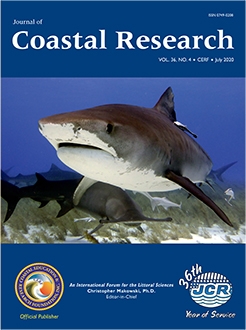O'Leary, M. and Gottardi, R., 2020. Relationship between growth faults, subsidence, and land loss: An example from Cameron Parish, Southwestern Louisiana, USA. Journal of Coastal Research, 36(4), 812–827. Coconut Creek (Florida), ISSN 0749-0208.
This study investigates the relationship between faulting, subsidence, and land loss in coastal Louisiana. A methodology that integrates three-dimensional (3D) seismic data, well logs, high-resolution topographic mapping (LIDAR), and historical aerial photography is successfully developed to identify fault-related geomorphic changes in southwestern Louisiana's Chenier Plain. Analysis of a 3D seismic survey and well logs reveals the presence of 10 normal faults that form an east-west graben in the middle of the study area. Well logs were used to further constrain the geometry of the faults. Shallow water well logs were used to map the faults at shallow depth, below the resolution of the seismic survey. Fault traces were extrapolated to the surface by maintaining constant dip and projected on LIDAR data. Elevation profiles derived from the LIDAR were conducted across the different faults, and results show that a distinct difference between the upthrown and downthrown sides of the faults occurs. Historical aerial photographs were used to investigate any change in geomorphology from 1953 to 2017 within the study area. Results reveal the occurrence of water bodies on the immediate downthrown sides of suspected fault traces. These findings suggest that faulting influences and focuses areas where subsidence is happening and subsequent land loss may occur, and detailed understanding of active shallow faulting in coastal areas can be used to identify regions that are at risk of land loss.





